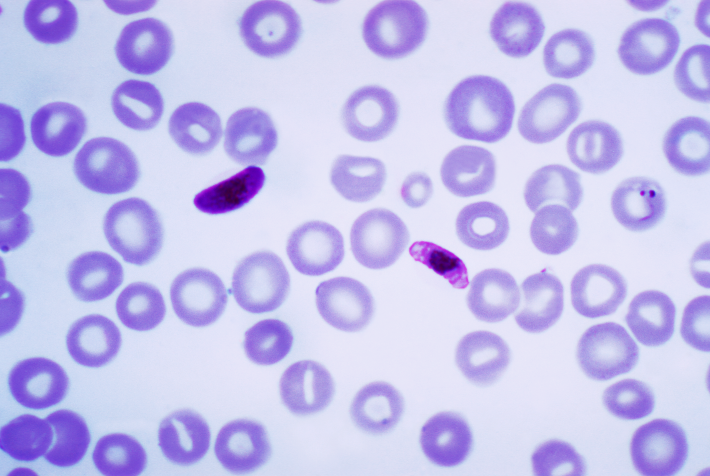
Malaria affects hundreds of millions of people around the world every year. And just two years ago, nearly half a million fatalities were recorded in a calendar year.
But what if the mosquito-borne disease could be sniffed out and its presence identified, before it began delivering its debilitating, flu-like effects?
Well, that is what's literally happening, with researchers utilizing dogs' keen sense of smell to determine malaria's presence in humans. And a good sniff may be all that's required.
The findings of a new study, which were presented today in New Orleans, showed that dogs could accurately detect the malaria parasite 70 percent of the time simply by smelling the socks worn of those infected by the disease. This occurred before subjects showed signs – like fever and chills – of having contracted malaria.
A finger-prick test can then be used to confirm the presence of the disease, which means that this particular canine skill could have the promise of ultimately serving as an early-warning system to identify and treat malaria.
"While our findings are at an early stage, in principle we have shown that dogs could be trained to detect malaria-infected people by their odour with a credible degree of accuracy," said Prof. Steve Lindsay, the study's principal investigator, from the Dept. of Biosciences at Durham University, UK.
"This could help prevent the spread of malaria to countries that have been declared malaria-free," he added, "and also ensure that people, many of whom might be unaware that they are infected with the malaria parasite, receive antimalarial drug treatment for the disease."
This is not a first in this area of research. Sniffing dogs have previously been trained to detect the presence of cancer in humans, as well as diabetes. But this is the first time canines were able to sniff out a parasite infection.
 Socks worn by a group of 175 children from West Africa, aged five to 14, were sent to a testing facility in the United Kingdom. Each pair was presented to two dogs that were previously trained to tell the difference between the smell of malaria-infected children, of which in this case there were 30, from the 145 who were unaffected by the malaria parasite, known as Plasmodium falciparum (see adjacent image). The dogs, a Labrador and Labrador-Golden Retriever, correctly identified 21 of the 30 malaria-positive samples. Also receiving training was a third dog, a Springer Spaniel.
Socks worn by a group of 175 children from West Africa, aged five to 14, were sent to a testing facility in the United Kingdom. Each pair was presented to two dogs that were previously trained to tell the difference between the smell of malaria-infected children, of which in this case there were 30, from the 145 who were unaffected by the malaria parasite, known as Plasmodium falciparum (see adjacent image). The dogs, a Labrador and Labrador-Golden Retriever, correctly identified 21 of the 30 malaria-positive samples. Also receiving training was a third dog, a Springer Spaniel.
While the sample size is relatively small, this serves as a potential breakthrough, largely because it's a non-invasive test that could give physicians insight to a disease that can be treated before it produces symptoms.
According to the Centers for Disease Control and Prevention, "While a number of companies and groups are working on developing a malaria vaccine, there is currently no effective vaccine on the market." As far as the impact malaria has on the global population, in 2016 "an estimated 216 million cases of malaria occurred worldwide and 445,000 people died, mostly children in the African Region." Meanwhile, "1,700 cases of malaria are diagnosed in the United States each year."
The findings from this study, produced through research funded by the Bill & Melinda Gates Foundation, were presented at the annual meeting of the American Society of Tropical Medicine and Hygiene.



